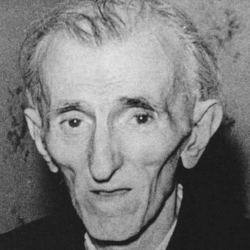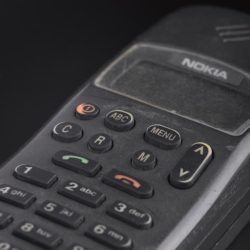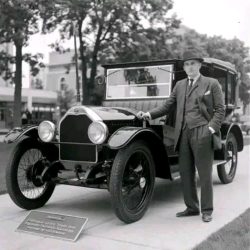On April 3, 1973, a historic moment in telecommunications took place in New York City. Martin Cooper, an engineer at Motorola, made the world’s first cell phone call, a groundbreaking achievement that would eventually lead to today’s mobile communication revolution. The call wasn’t just any call; it was a bold message to Cooper’s main competitor, Joel Engel, the head of research at Bell Labs for AT&T. Cooper’s audacious choice to call Engel marked not only a technological triumph but also a symbolic one in the competitive race to develop cellular technology.

Early Wireless Communication and the Road to Cellular
Wireless communication dates back to the late 19th century, initially used primarily by the maritime industry for ship-to-shore messaging. By the early 20th century, however, various land-based industries, including police forces, firefighting units, and financial institutions, began to see the potential benefits of wireless technology. Yet, these early systems were primitive and limited, often involving fixed-frequency channels that allowed only one user per channel within a certain area. AT&T made strides with the Mobile Telephone System in 1946 and later with the Improved Mobile Telephone Service in 1968, but these still relied on fixed frequencies, making scaling up difficult.
In 1947, a significant advancement came from Douglas Ring, an engineer at Bell Labs, who introduced the concept of a “cellular” system. His visionary idea was to divide large geographic areas into smaller “cells,” each equipped with its own antenna, enabling the same frequencies to be reused across different cells. However, the technology of the time couldn’t handle the complexities of managing a cellular network—seamlessly switching calls between cells as users moved and tracking the high volume of data required for this innovation. It would take decades before computing power could support such a system.
The Race for Cellular Technology
By the late 1960s, major telecommunications companies worldwide were vying to be the first to make cellular technology feasible. Bell Labs, led by Joel Engel, was making significant strides and appeared to be the frontrunner. But Motorola, a significant player in the radio industry, was hot on their heels. Martin Cooper, one of Motorola’s most inventive engineers, took on the challenge. He and his team developed the DynaTAC 8000X, a prototype for the world’s first handheld mobile phone. The DynaTAC was large and heavy by today’s standards but represented a monumental leap forward—it worked independently, without the need to be tethered to a fixed location.
The Historic First Call
The completion of the DynaTAC prototype called for a historic demonstration. Motorola scheduled a press event at the Hilton Hotel in New York to showcase the phone. However, Cooper, understanding the gravity of the moment, decided to conduct a test call beforehand. He wanted to ensure everything was working perfectly and, more importantly, to make a statement. For this, he had a unique idea: he would call his competitor.
On April 3, 1973, Martin Cooper walked down Sixth Avenue in New York, phone in hand, and dialed Bell Labs’ number. When Engel answered, Cooper announced, “I’m calling you from the first cell phone in history. In 10 minutes, turn on your TV; you’ll see me presenting it at the Hilton.” Engel was stunned. The call symbolized more than just Motorola’s technological breakthrough; it was a decisive moment in the race for mobile communication, as Motorola had beaten Bell Labs to the punch.
The Impact and Legacy of the First Cell Phone Call
Cooper’s first call marked the beginning of a revolution. The technology demonstrated that mobile communication was feasible and led to rapid advancements in cellular technology. The DynaTAC 8000X, although bulky and expensive, paved the way for smaller, more affordable mobile phones. By the 1980s and 1990s, cellular networks became more robust, allowing mobile phones to become mainstream consumer devices.
Martin Cooper’s vision and daring phone call to Joel Engel did more than showcase Motorola’s innovation; it kickstarted a worldwide shift in how people communicate. Today, billions of people around the world use mobile phones daily—a testament to the lasting impact of that historic first call.















